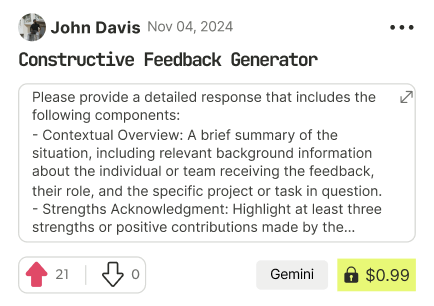prompt mine App
Find, Create & Share AI Magic
Rome's Rise: A Succession Crisis
# Unpacking the Shift: Jerusalem to Rome - A Historical Analysis of Church Authority
This investigation traces the evolution of church leadership from its Jerusalem origins to the Roman papacy, addressing the core question of how Rome gained authority over a faith rooted in Jerusalem.
**PART 1: ORIGINAL STRUCTURE - THE JERUSALEM MODEL**
* **Yahusha's Authority Structure:** Yahusha established a decentralized leadership model based on consensus and shared authority. Matthew 18:18-20 emphasizes collective decision-making ("whatever you bind on earth..."). It suggests a community-based approach, not a hierarchical one.
* **Leadership in Jerusalem:** The Jerusalem assembly was led by James (Ya'akov), the brother of Yahusha (Acts 15:13). This indicates that leadership was potentially familial or based on respected eldership within the community.
* **First "Headquarters":** Jerusalem served as the initial center of the faith. The events recorded in the Book of Acts highlight Jerusalem as the focal point for the early believers and the dispatching point for missionaries.
* **Apostolic Succession:** The original apostles dispersed to various regions, establishing local congregations. The concept of "apostolic succession" in the Roman sense (direct, unbroken lineage of authority) lacks clear support in early writings. The apostles appointed elders (plural) in each city (Acts 14:23), suggesting a localized leadership model rather than a centralized one. The fate of the apostles varied, with many facing martyrdom, further complicating a clear line of succession.
**PART 2: THE PETER QUESTION - A CLOSER LOOK**
* **Matthew 16:18 Analysis:** The distinction between *Petros* (Peter - a rock) and *petra* (the rock - foundation) in Matthew 16:18 is crucial. Many interpretations suggest that *petra* refers to Yahusha himself or Peter's confession of faith (that Yahusha is the Messiah), not Peter as an individual.
* **Peter's Self-Description:** Peter identifies himself as a "fellow elder" (1 Peter 5:1), not as a supreme leader. This aligns with a more collegial leadership style.
* **Peter in Rome:** Historical evidence of Peter's presence in Rome is debated. While tradition places him there, concrete documentation from the 1st century is scarce. Early church fathers offer varying accounts, making definitive confirmation difficult.
* **Paul's Gentile Mission:** Paul's self-designation as the apostle to the Gentiles (Romans 11:13) suggests a division of labor and spheres of influence among the apostles, rather than a single, overarching leader. This implies that Peter's primary focus was elsewhere, possibly with the Jewish believers.
**PART 3: POWER TRANSFER TIMELINE - RISE OF ROME**
* **Jerusalem's Decline:** The destruction of Jerusalem in 70 CE marked a turning point. The Jewish-Christian community was scattered, diminishing Jerusalem's role as the central authority.
* **Rome's Ascendancy:** Rome's rise was gradual, leveraging its political importance as the capital of the Roman Empire. Over time, the church in Rome gained influence due to its location and wealth.
* **Early Claims of Authority:** Claims of Roman authority began to appear in the 2nd and 3rd centuries, often based on the perceived link to Peter. However, these claims were not universally accepted. Irenaeus, around 180 AD, argued for the importance of the Roman church due to its size and apostolic foundation.
* **"Pope" Emerges:** The title "Pope" (Papa, meaning "father") was initially used broadly for bishops. Its exclusive association with the Bishop of Rome developed over centuries. By the 6th century, it became more closely linked with the Roman bishop, solidifying by the 11th century under Gregory VII.
* **Monarchical Bishops:** The transition from plural elders to a single, monarchical bishop in each city occurred gradually in the 2nd and 3rd centuries. Ignatius of Antioch (early 2nd century) advocated for a strong, singular bishop in his letters, influencing this development.
**PART 4: SCRIPTURAL AUTHORITY MODEL VS. CATHOLIC HIERARCHY**
* **Yahusha's Model:** Yahusha explicitly discouraged the pursuit of titles and hierarchical structures (Matthew 20:25-26, 23:8-12). His emphasis on servant leadership (John 13:14) contrasts sharply with later displays of papal authority.
* **Catholic Hierarchy:**
* **Papal Infallibility:** The doctrine of papal infallibility, formally defined in 1870 at the First Vatican Council, asserts that the Pope is incapable of error when speaking *ex cathedra* (from the chair) on matters of faith and morals.
* **Ecclesiastical Ranks:** The elaborate hierarchy of cardinals, archbishops, and other ranks developed over centuries, reflecting both ecclesiastical and political power dynamics.
* **Temporal Power:** The Papal States, with the Pope as a temporal ruler, existed for over a thousand years. This temporal power, while eventually diminished, highlights the significant departure from Yahusha's teachings on worldly dominion.
**Historical Sources:**
* **Eusebius's *Ecclesiastical History*:** Provides an early account of church history, though with a Roman perspective.
* **Irenaeus's *Against Heresies*:** Argues for the importance of the Roman church.
* **The writings of the early Church Fathers:** Offer insights into the developing views on church leadership and authority.
* **Documents of the early Church Councils:** Illustrate the evolving doctrines and structures.
**Conclusion:**
The shift from a Jerusalem-centered, decentralized faith to a Roman-dominated, hierarchical structure was a complex process influenced by political, social, and theological factors. While the Roman church claims apostolic succession through Peter, the historical evidence and scriptural interpretations present a more nuanced picture of early church leadership. The adoption of Roman Imperial structures by the church, while not explicitly supported by apostolic writings, contributed to the centralization of power in Rome. Further research into primary sources and diverse theological perspectives is crucial for a complete understanding of this transformative period.

Find Powerful AI Prompts
Discover, create, and customize prompts with different models, from ChatGPT to Gemini in seconds

Simple Yet Powerful
Start with an idea and use expert prompts to bring your vision to life!

